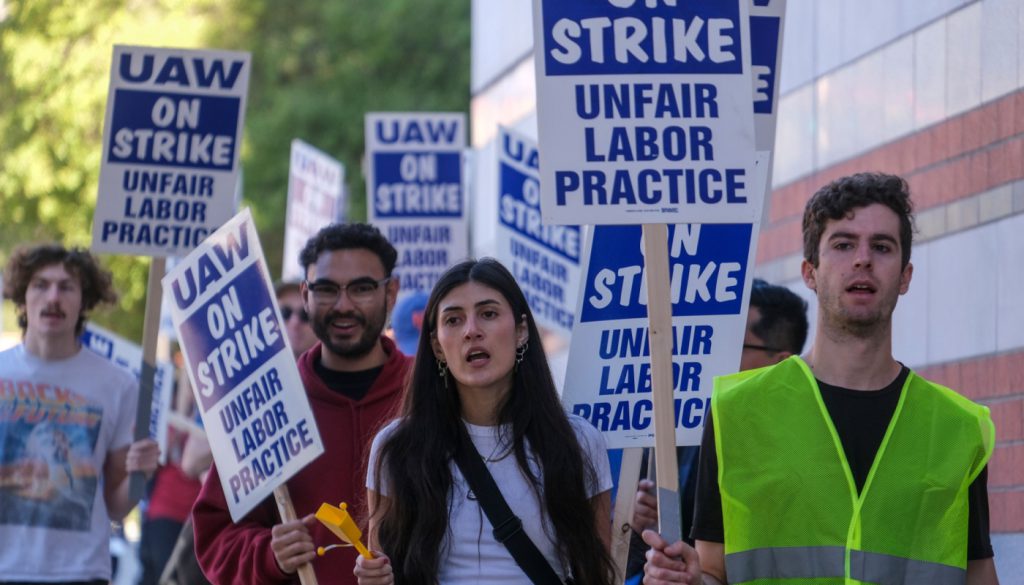Labor 101: Understanding the Relationship Between Federal and State Labor Laws

Ken Green
CEO & Founder
UnionTrack
All workers should know and understand key labor laws that dictate their rights in the workplace. It’s the only way they can protect themselves from predatory employer practices.
“Workers have fewer rights in the United States than in many other countries,” says Kimberly Phillips-Fein, professor of history at Columbia University. “But the ones that they have are important.” And they vary greatly by state.
Workers are protected by both federal and state labor laws, but those laws don’t always align. Such situations can be confusing for workers, leaving many asking:
- When labor laws are different, which one supersedes the other?
- Who enforces the laws at both the federal and state levels?
- Where do workers turn when they have questions or conflicts about their rights in the workplace?
This article attempts to answer those questions by explaining the relationship between federal and state labor legislation.
Federal Labor Laws Reign Supreme, Except in Labor
There are a handful of federal labor laws that govern workplaces. The key ones are:
- The Federal Labor Standards Act (FLSA) dictates minimum standards for wages, overtime, record keeping, and child labor for full- and part-time workers in both the private and public sectors.
- The National Labor Relations Act (NLRA) gives private-sector workers the right to organize into unions and bargain collectively.
- Occupational Safety and Health (OSH) Act regulates health and safety conditions in most private industries.
- The Family Medical Leave Act (FMLA) ensures job protection for workers at private sector companies with at least 50 employees who must take a leave of absence for medical reasons.
However, because Article 10 of the U.S. Constitution gives states the right to govern themselves, they have the power to pass their own labor laws which often differ from federal standards. For example, the federal minimum wage is $7.25 an hour, but 30 states plus the District of Columbia have a higher minimum wage.
What makes labor law unique is that those state laws usually supersede federal laws. Article 6 of the U.S. Constitution dictates that federal laws supersede state laws; the exception is when state laws offer more rights and protections, which is often the case with labor laws.
“Labor laws are enacted to protect the rights, health and financial remuneration of workers,” explains Andrew Latham at Chron. “Therefore, when federal and state laws conflict, the U.S. Department of Labor instructs employers and employees to follow the law that provides the highest standard of protection to employees and the strictest standard for employees.”

Federal and State Agencies Enforce Labor Laws
Each of the federal labor laws are enforced by different government departments or agencies.
- The Wage and Hour Division (WHD) of the U.S. Department of Labor (DOL) administers and enforces all aspects of the FLSA and the FMLA.
- The National Labor Relations Board (NLRB) enforces the NLRA and hears unfair labor practice cases.
- The Occupational Safety and Health Administration (OSHA) within the DOL enforces the rules of the OSH Act.
- The Wage and Hour Division also administers the Family Medical Leave Act for most private-sector employees while The Office of Personnel Management (OPM) administers it for most federal employees.
Each state also has a labor agency responsible for administering its labor laws. Which department or agency workers should contact when they have questions or concerns about some aspect of labor law depends on the issue at hand and which law is superseding — federal or state.
Unions Help Workers Understand Labor Laws
Unions play a key role in helping workers become as informed as possible about their rights under both federal and state labor laws. As subject matter experts on all things labor, unions are a reliable source of information for workers who don’t know whom to trust.
“Unions inform members and workers in general about the rights and protections they are entitled to by law, establish mechanisms to voice grievances with less risk of retaliation, and even help shape legislation,” write Kate Bahn and Carmen Sanchez Cumming, respectively the research director at The Urban Institute and a research associate at the Washington Center for Equitable Growth.
But people don’t know this if unions don’t tell them. UnionTrack® ENGAGE®, a communication platform, gives members and leaders the ability to organize public information campaigns to broaden the reach of union messaging and get more people engaged with the union.
Images used under license from Shutterstock.com.







